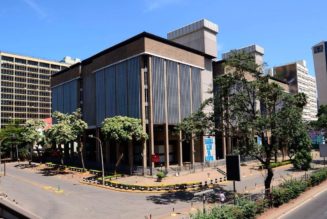Markets & Finance
Nairobi satellite towns making a fortune for property investors
Wednesday July 26 2023
Nairobi Expressway along Waiyaki Way, Westlands in this photo taken on April 16, 2022. PHOTO | JEFF ANGOTE | NMG
Nairobi’s satellite towns, among them Ngong, Mlolongo and Syokimau are making a fortune for investors in the property sector, even as the suburbs such as Upper Hill, Kilimani and Lavington lose value.
The satellite towns recorded the biggest land price appreciation gains in five years, riding on improved accessibility and quality amenities that are a magnet for the middle class.
An analysis of land prices in Nairobi’s satellite towns and suburbs by realtors HassConsult shows that the cost of an acre in Ngong has shot up by 60 percent to Sh32 million since June 2018.
Read: Biggest rents drop in Nairobi in five years
Mlolongo and Syokimau are the second best after their land prices increased by 49 percent to Sh36.3 million and Sh30.3 million in the five years respectively.
Several of Nairobi’s satellite towns, which had previously been shunned by the middle class due to difficulties in access, have benefited from major road works carried out in the past decade.
These works include upgrades to main arteries such as Mombasa Road and Thika Road, as well as interconnecting roads between the towns themselves.
Other towns benefiting from the infrastructure development are Athi River, Juja, Kiserian, Kitengela and Thika, where land prices in the half-decade have gone up by between 38 and 46 percent.
“The Ngong-Kiserian-Isinya Road, formerly a rough road, now seamlessly connects the three towns. Ngong residents have less traffic to contend with when travelling to and from work thanks to the expansion of Ngong Road, and the expansion of the Ngong- Kibiko-Suswa Bypass opening up the Kibiko area,” said HassConsult head of development consulting and research Sakina Hassanali.
While areas such as Ruiru, Juja and Thika have long benefited from the completion of the Thika Road expansion 11 years ago, Syokimau, Mlolongo, Athi River and Kitengela are now gaining from the construction of the Nairobi Expressway, which offers commuters a chance to bypass the painful Mombasa Road traffic.
New schools and malls have also come up along these improved transport corridors, helping attract middle-class land buyers who are looking for affordable land on which to build homes.
The cost question, besides the reduced supply of readily available land for development, has been seen as one of the factors behind the slower growth in land prices in the city’s suburbs.
On average, the cost of an acre of land in the selected satellite towns analysed by HassConsult stood at Sh30.7 million by June, compared to an average of Sh213.7 million for the city’s suburbs.
However, these suburbs include commercial and semi-commercial zones such as Upper Hill, Kilimani, Westlands and Parklands, where the cost of an acre ranges between Sh397 million and Sh479 million.
They also include high-end residential areas such as Muthaiga, Gigiri, Lavington and Spring Valley, whose land prices of between Sh213 million and Sh237 million put them beyond the reach of middle-class Kenyans.
While Muthaiga, Spring Valley, Loresho and Lang’ata recorded land price growth on a similar scale to the most attractive satellite towns, the other suburbs have either seen limited price appreciation or declines since 2018.
Muthaiga and Spring Valley registered 48 percent price gains to Sh213.1 million and Sh236.8 million per acre respectively, ahead of Lang’ata (up 28 percent to Sh77.7 million) and Loresho (up 22 percent to Sh102 million).
Upper Hill led the suburbs in recording price falls, shedding 14 percent in value to Sh478.7 million per acre.
Although the area still has the city’s costliest land parcels, an oversupply of office space, slow improvement of roads and utilities and the emergence of Westlands as a preferred destination for office space developers have seen its value go down in the period.
Westlands, which enjoys better access links compared to Upper Hill from the city’s upper-end estates, has gained 11 percent in land price to Sh452.4 million, closing the price gap on Upper Hill from Sh151.7 million in June 2018 to Sh26.3 million today.
Read: Where investors made billions in the first six months of 2023
Kilimani and Kileleshwa have also recorded price falls of 7.0 percent and 4.0 percent respectively, partly on concerns that available utilities might not keep up with the volume of commercial developments being put up in these areas, which were previously dominated by single-dweller property.
Among the satellite towns, only Limuru—down five percent to Sh20.9 million—recorded a price drop in the five years, partly due to the delayed completion of upgrade works on the ABC-Rironi highway.









